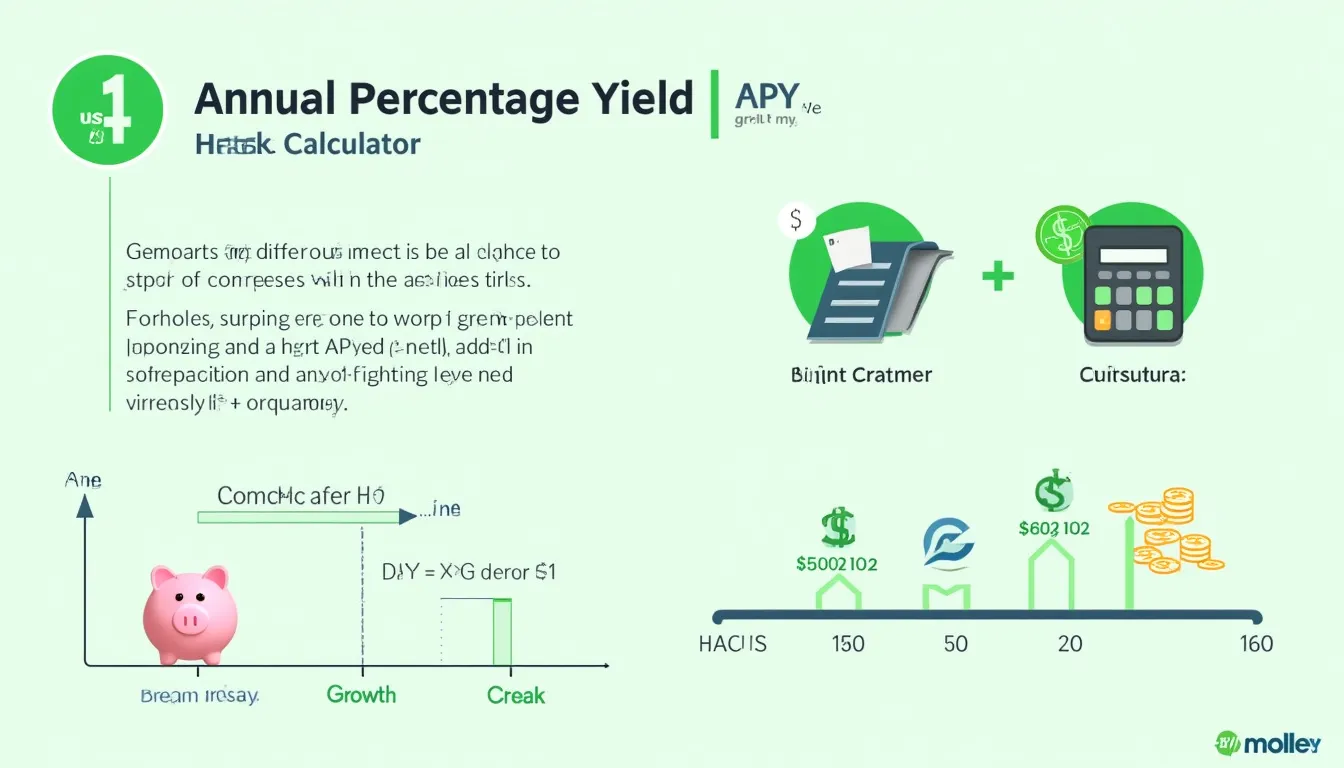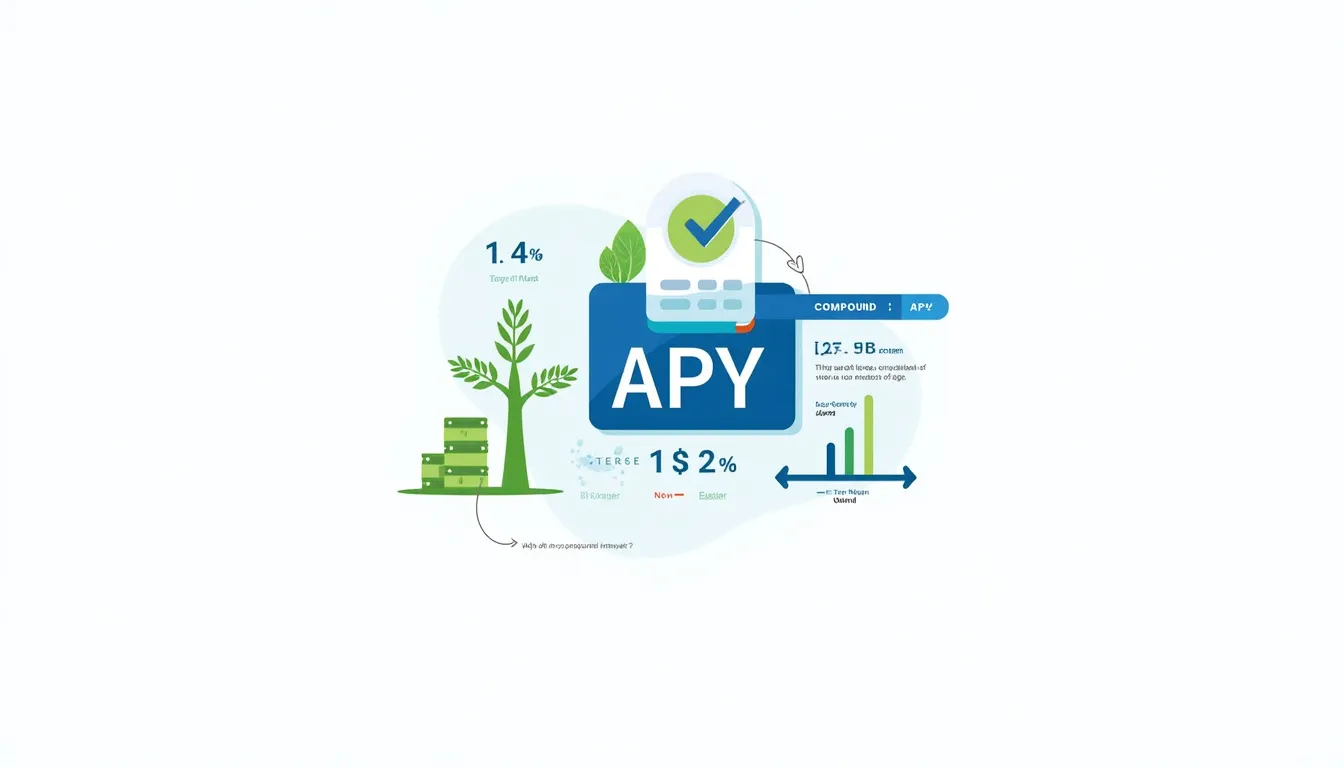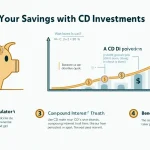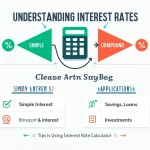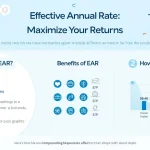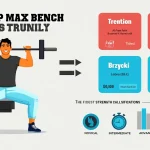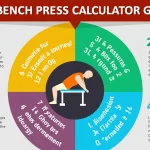Annual Percentage Yield (APY) Calculator
Is this tool helpful?
How to use the tool
- Enter the stated annual interest rate (%)
Example A: 2.75 Example B: 6.10 - Select how many times the interest compounds per year
Example A: 12 (monthly) Example B: 365 (daily) - Press “Calculate” to display the effective Annual Percentage Yield.
Formula used
$$\text{APY}= \left(1+\ rac{r}{n}\right)^{n}-1$$ where r is the nominal annual rate (decimal) and n is the compounding frequency.
Worked examples
- 2.75 % compounded monthly
$$\text{APY}= \left(1+\ rac{0.0275}{12}\right)^{12}-1 = 0.0279 = 2.79 \%$$ - 6.10 % compounded daily
$$\text{APY}= \left(1+\ rac{0.061}{365}\right)^{365}-1 = 0.0619 = 6.19 \%$$
Quick-Facts
- APY formula mandated by the FDIC for disclosures (FDIC Consumer Compliance, 2024).
- National average savings APY: 0.46 % (FDIC Weekly National Rates, May 2024).
- Banks must quote APY under the Truth in Savings Act, 12 U.S.C. §4303 (U.S. Code, 2023).
- Common compounding options: annually, quarterly, monthly, daily (SEC Investor Bulletin, 2023).
FAQ
What is APY?
APY is the yearly rate of return that includes compound interest, making different accounts directly comparable (CFPB, n.d.).
How do you calculate APY?
Divide the nominal rate by compounding periods, add one, raise to the same power, then subtract one—see the formula above (FDIC, 2024).
Why is APY higher than the nominal rate?
Compounding earns interest on interest; each period adds a small gain that raises the total annual return (SEC, 2023).
Does compounding frequency matter?
Yes. Daily compounding at 5 % yields 5.13 %, while annual compounding stays at 5 % (Calculator example; FDIC, 2024).
How is APY different from APR?
APR ignores compounding; APY includes it, showing the effective yield (CFPB, n.d.).
Can I compare CDs and savings accounts with APY?
Yes. APY standardises returns across products, regardless of term or compounding schedule (FDIC, 2024).
Is a higher APY always better?
Higher APY increases earnings but also review fees, withdrawal limits, and insurance coverage (FDIC Deposit Insurance FAQ, 2023).
How does this calculator aid long-term planning?
It reveals the compounding boost each year, letting you project multi-year growth accurately for goals like retirement (SEC, 2023).
Important Disclaimer
The calculations, results, and content provided by our tools are not guaranteed to be accurate, complete, or reliable. Users are responsible for verifying and interpreting the results. Our content and tools may contain errors, biases, or inconsistencies. We reserve the right to save inputs and outputs from our tools for the purposes of error debugging, bias identification, and performance improvement. External companies providing AI models used in our tools may also save and process data in accordance with their own policies. By using our tools, you consent to this data collection and processing. We reserve the right to limit the usage of our tools based on current usability factors. By using our tools, you acknowledge that you have read, understood, and agreed to this disclaimer. You accept the inherent risks and limitations associated with the use of our tools and services.
